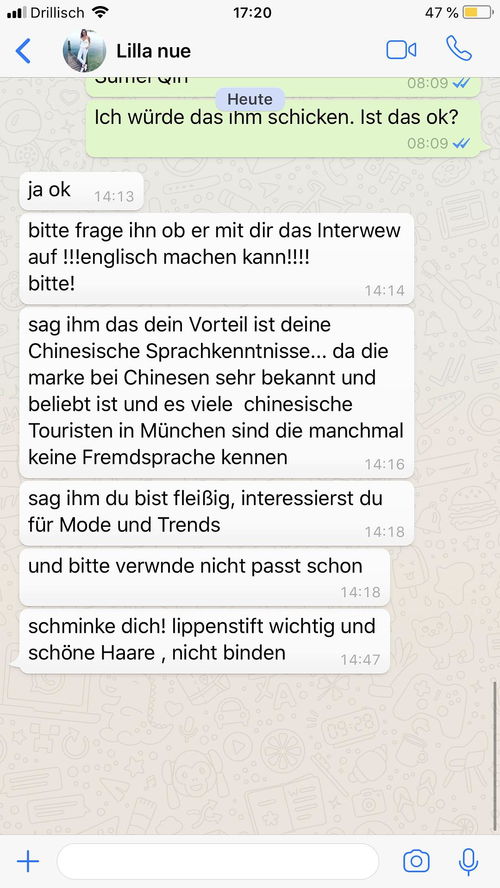Oh, the thrill of a Skype interview! You've just wrapped up what felt like a whirlwind of questions and answers, and now, you're left with that delightful mix of nerves and excitement. But wait, there's one more step you shouldn't skip – sending a thank-you letter. Yes, you heard that right! A simple thank-you note can make all the difference. So, let's dive into how to craft the perfect Skype interview thank-you letter in English, shall we?
Why a Thank-You Letter Matters

Before we get into the nitty-gritty of writing your letter, let's talk about why it's so important. Imagine you're a chef, and the interview was your main ingredient. The thank-you letter is the seasoning that brings everything together. It shows your appreciation, reinforces your interest in the position, and leaves a lasting impression.
According to a survey by CareerBuilder, 22% of employers say a thank-you note can be the difference between two equally qualified candidates. So, don't underestimate the power of a well-crafted thank-you letter!
The Structure of a Thank-You Letter

Now, let's break down the structure of your thank-you letter. It should be concise, professional, and personalized. Here's a general outline:
1. Header: Include your contact information at the top, followed by the date and the employer's contact information.
2. Salutation: Address the letter to the interviewer by name if possible. If not, \Dear [Company Name] Hiring Team\ is a safe bet.
3. Opening Paragraph: Express your gratitude for the opportunity to interview. Mention the date of the interview and the position you're applying for.
4. Body Paragraph(s): Reiterate your interest in the role and why you're a good fit. Reference specific points from the interview to show you were actively listening.
5. Closing Paragraph: Reiterate your enthusiasm for the position and your hope to hear back soon. Include your contact information for any follow-up.
6. Sign-off: Use a professional closing like \Sincerely\ or \Best regards,\ followed by your name.
Crafting the Perfect Opening Paragraph

Your opening paragraph is like the appetizer of your thank-you letter. It should be engaging and set the tone for the rest of the letter. Here's an example:
\Dear [Interviewer's Name],
I wanted to take a moment to express my sincere gratitude for the opportunity to interview for the [Position Name] role on [Date of Interview]. It was a pleasure to connect with you and learn more about [Company Name] and the exciting projects you're working on.\
Remember to personalize this paragraph by mentioning specific details from the interview, such as the projects you discussed or the company culture you admire.
The Heart of Your Letter: The Body Paragraphs
The body of your thank-you letter is where you showcase your enthusiasm and qualifications. Here's how to make it shine:
1. Reiterate Your Interest: Start by reiterating your interest in the position. For example, \I am particularly excited about the opportunity to contribute to [Company Name]'s [specific project or initiative].\
2. Highlight Your Qualifications: Reference specific points from the interview that demonstrate why you're a great fit. For instance, \During our conversation, I was thrilled to discuss my experience with [specific skill or project], which I believe aligns perfectly with the challenges of the [Position Name].\
3. Express Gratitude: Show appreciation for the interviewer's time and insights. For example, \I appreciate the time you took to discuss [specific topic or question]. It was incredibly insightful and helped me understand the role even better.\
Here's a sample body paragraph:
\During our interview, we touched on my experience with [specific skill or project], which I believe is a strong match for the [Position Name] role. I am particularly excited about the opportunity to leverage my [specific skill or experience] to contribute to [Company Name]'s [specific project or initiative]. Additionally, I was grateful for the chance to discuss [specific topic or question], which provided valuable insights into the challenges and opportunities of the role.\
Closing Strong: The Closing Paragraph
Your closing paragraph is where you wrap up your letter and leave a lasting impression. Here's how to do it:
1. Reiterate Your Enthusiasm: Express your continued interest in the position and your hope to hear back soon. For example, \I am very much looking forward to the possibility of joining [Company Name] and contributing to your team.\
2. Include Your Contact Information: Provide your contact information for any follow-up questions or discussions. For instance, \Please feel free to reach out to me at [your email address] or [your phone number] if you have any further questions or need additional information.\
Here's a sample closing paragraph:
\In closing, I want to reiterate my enthusiasm for the [Position Name] role at
